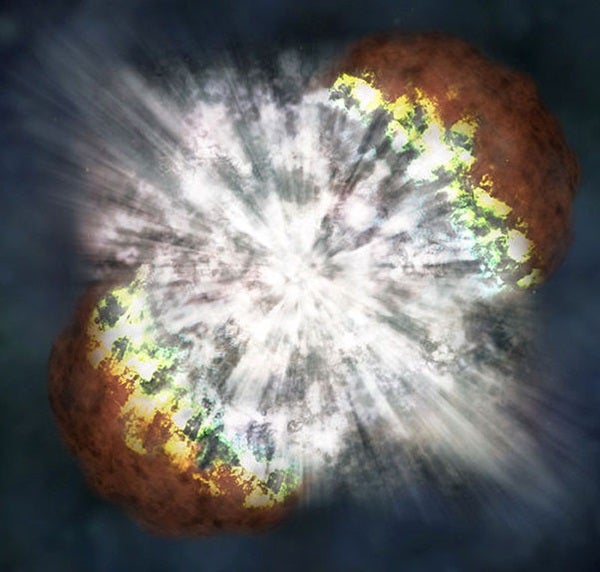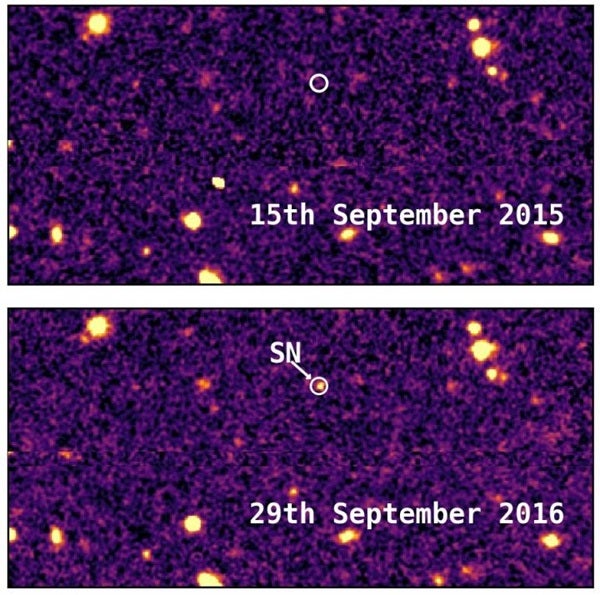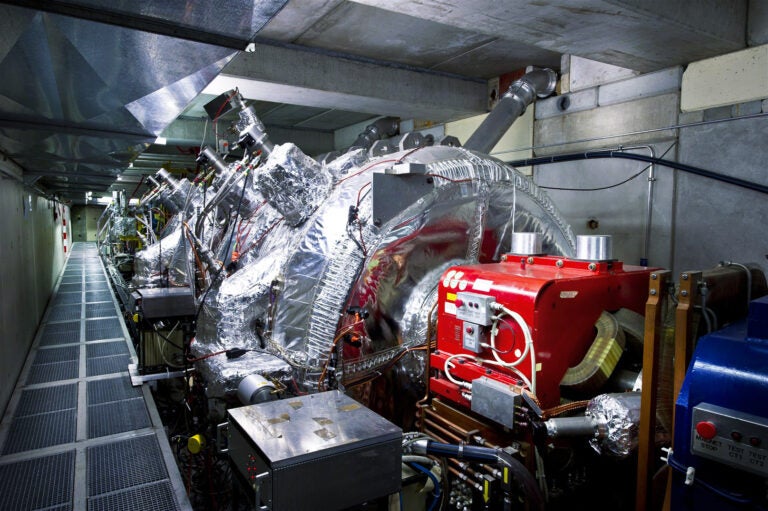The supernova, dubbed DES16C2nm, was first detected back in August 2016 by the Dark Energy Survey, which is currently mapping several hundred million galaxies in order to learn more about the mysterious force known as dark energy. The distance and overall brightness of DES16C2nm was later confirmed in October 2017 using three of the world’s most powerful telescopes: the Very Large Telescope in Chile, The Magellan telescope also in Chile, and the Keck Observatory in Hawaii.
A supernova explosion occurs when a massive star runs out of fuel and collapses in on itself due to the pull of gravity. If the star is not massive enough to form a black hole (less than around 20 solar masses), then its collapsing core eventually rebounds off itself and bursts outward in what we see as a supernova.
DES16C2nm is a member of a rare breed of supernovae known as superluminous supernovae (SLSN). These blindingly bright explosions make up the rarest and most luminous class of supernovae, and researchers first discovered them just 10 short years ago. Astronomers think that SLSN, which can outshine even the brightest galaxies, are formed when material falls onto the densest objects in the universe (besides black holes) — neutron stars.
“What we think could be happening here is that the stellar explosion produces a magnetar at its core: a rapidly spinning neutron star with a magnetic field 100 trillion times stronger than that on Earth,” said Chris D’Andrea, co-author and postdoctoral fellow at the University of Pennsylvania, in a press release. “If we look at how the light from the superluminous supernova evolves in time, it matches very well models of the amount of energy that magnetars emit as they spin. This energy is hitting the winds of the ejected material from the stellar explosion and dramatically brightening what we’re seeing.”
By understanding the exact physical processes that lead to superluminous supernovae, astronomers hope to develop another “standard candle” — an astrophysical object with a known and fixed luminosity — that will be used to accurately determine astronomical distances.
Currently, astronomers like to use Type Ia supernovae as standard candles because their exact brightness is known, meaning that their apparent brightness only changes as a result of distance and intervening, light-blocking dust. Because SLSN can be up to 100 times as bright as Type Ia supernovae, astronomers would like to use SLSN as standard candles across greater distances.
“The trick to being able to do this,” said D’Andrea, “is to find as many of these objects as possible to try to find patterns between the light they emit and how bright each object is. Given a large enough sample of SLSN, scientists may then be able to ‘standardize’ them as they did with Type 1a supernovae.”
Though the Dark Energy Survey will continue to hunt for examples of this rare class of supernovae, its mission is only scheduled to last one more year. Fortunately, more powerful surveys are planned for the future. In particular, the Large Synoptic Survey Telescope, which will entirely map the southern sky every few nights, is scheduled for first light next year.
“Such supernovae were not thought of when we started [the Dark Energy Survey] over a decade ago,” said co-author Bob Nichol, professor of astrophysics at the University of Portsmouth. “Such discoveries show the importance of empirical science; sometimes you just have to go out and look up to find something amazing.”











